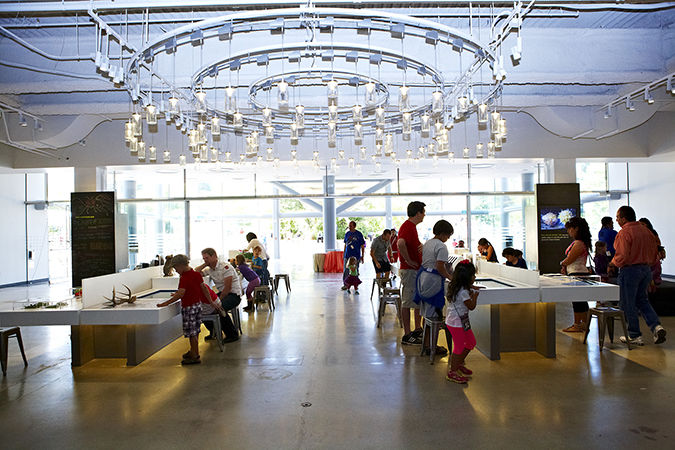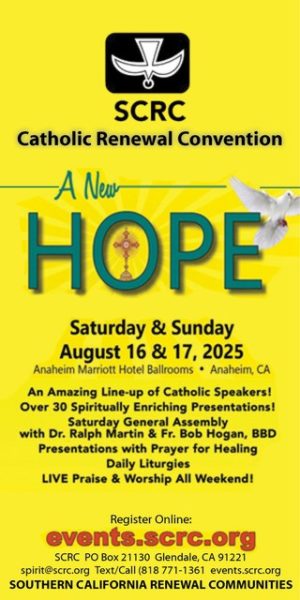Certain phrases evoke the pilgrim urge: Franciscan Appalachian Hermitage. Wayside Chapel. Summer Cottage. But nothing could be a clearer invitation to drop everything, go sit on a bench in the sun, and ponder for a while than the phrase “pollinator garden.”
So when I saw that the Natural History Museum recently added three-and-a-half acres of Nature Gardens — and that a Pollinator Garden was among them — I hurried right down.
Fenced and flowered beautifully, the pollinator garden was an oasis surrounded by tall old trees. Late on a weekday afternoon (the museum closes at 5), I had the place almost to myself. Wide meandering walkways. The wafting smell of sage. Hummingbird feeders and a birdbath and blue ceanothus drowsing in the lambent 4 o’clock light. Purple iris, red yarrow, a stand of rich yellow-green kangaroo paw.
Lettered blackboards were scattered throughout the grounds, offering enough information to intrigue but not overwhelm. “How does pollination happen? ... Wind … Water … Animals. Birds, bats, bees and even geckos act as pollinators.”
The focal point was a pond, overhung with trees, rimmed with sitting-sized rocks, and dotted with clumps of slender green reeds: “A gathering place for wildlife, bugs, including the backswimmer and the naiad; birds, including the black phoebe; mammals, including the sleeping opossum. All come here to drink, find food, cool down, or breed. Look closer.”
I looked closer and saw pearly everlasting, plumbago, lantana, the rare island snapdragon.
Waves of wildflowers rippled color: salmon, deep fuchsia, larkspur blue, the saturated gold of California poppies (the pollinator garden will be in bloom all year). “Over 500 kinds of bees live in Los Angeles. Unlike European honeybees and their hives, most bees are solitary, making nests in wood or on the ground.” Who knew most bees are hermits?
Several folks sat along the north wall of the adjacent rose garden, gazing through the fence and enjoying the flowers for free. Around the corner were a café, plenty of bathrooms, and a bat sensor.
The Nature Gardens continued. An Urban Wilderness, featuring plants native to the Los Angeles Basin, plus opossum prints and animal scat. A “get dirty zone” for kids. The Living Wall consisted of vertical slabs of rock, sandwiched together leaving interstices where lizards, insects, and plants had set up shop.
I poked and peered for a bit (this is encouraged). Snail shells. Spider webs. Echeviera “Mauna Loa,” a splendid orange and cabbage-green leafy lettuce-like succulent with thick warty leaves.
It was when I turned again, though, that I stumbled upon the nerve center of the Nature Gardens: the Listening Tree area.
A number of silver trumpet-shaped protuberances of varying heights (technically xylem tubes) sprouted from the ground, the mouths, like the mouths of old-fashioned telephones, covered with a perforated disc.
“Listen,” a sign read. “You can hear water traveling from the roots to the leaves.”
I sidled up to the height-appropriate trumpet, placed my ear to the perforated disc, and stood for a moment: nothing, nothing, a faint staticky echo. Then suddenly, a gurgling, a flowing, the unmistakable sound of rushing water. Water moving in tiny capillaries from the roots to the leaves of a tree! Water moving upward: how does that even happen?
I stood, transfixed: one ear tuned to this world, the other to a world unknown. I began wondering about the sound of the blood flowing through my own veins. I began pondering the amount of water in the world that is flowing from roots to leaves at any given time. What would all the water sound like? What would all the blood sound like?
What does this have to do with culture? you ask. You could say the landscape architects were artists. You could point out that, with the addition of the Nature Gardens, the NHM now bills itself as in indoor-outdoor museum. You could even say the flowing water was a kind of music.
But I don’t think that kind of stretch is necessary. Culture, as defined by Merriam-Webster as “the beliefs, customs, arts, etc., of a particular society, group, place, or time.” Could it be a coincidence that St. Francis is the most beloved saint of all time and when we picture him, he’s outdoors with a bird on his finger? Would we be quite so eager to wage war if we could stop for a minute and listen?
The more we know about what surrounds us, the water, the air, the plants, the insects, how they interact, the more respectful and reverent we’re going to be. The more lost in wonder we’re going to be. The more we’re going to want to love God with all our hearts, all our minds, all our souls.
That people among whom we work and breathe had thought to create this garden and put a Living Wall and a bat sensor and a Listening Tree in it was a communication. Touch, look, smell, see, listen. A word had been spoken, a statement had been made, about how and why we want to live.
I looked out over the Pollinator Garden, marveling that, though I am past pollinating age myself, all around me were birds and trees and plants, and thousands more beginning to be born. I thought of the 24 years I had lived in Los Angeles: a city maddeningly, sublimely, incarnate; forever a paradox, forever a mystery. I thought of how deeply I had been formed during that time by simply going out my front door and walking.
I thought of the history of L.A.: the Spanish explorers, the power struggles for the Owens Valley, the real estate grabs. I thought of how all that time, out of earshot, all over the city, water had been flowing from roots to leaves.
I looked down at my trusty Pumas, and out over the wildflowers, and up at the sky. I put my ear to the trumpet again and listened. In the middle of Los Angeles, hard by the busy intersection of Exposition Boulevard and Figueroa Street, with the 110 thrumming a quarter-mile to the east, I could hear the heartbeat of God.
“Where dost thou abide, Master?” the disciples ask [John 1:38].
It’s the question we all ask, in one way or another, all our lives: Who are you? Where are you?
“Come and see,” Christ replies.
The Natural History Museum of Los Angeles County is located at 900 Exposition Blvd., Los Angeles. General adult admission: $12, or $6.50 for the Nature Gardens alone. Contact: (213) 763-3466 or nhm.org.

